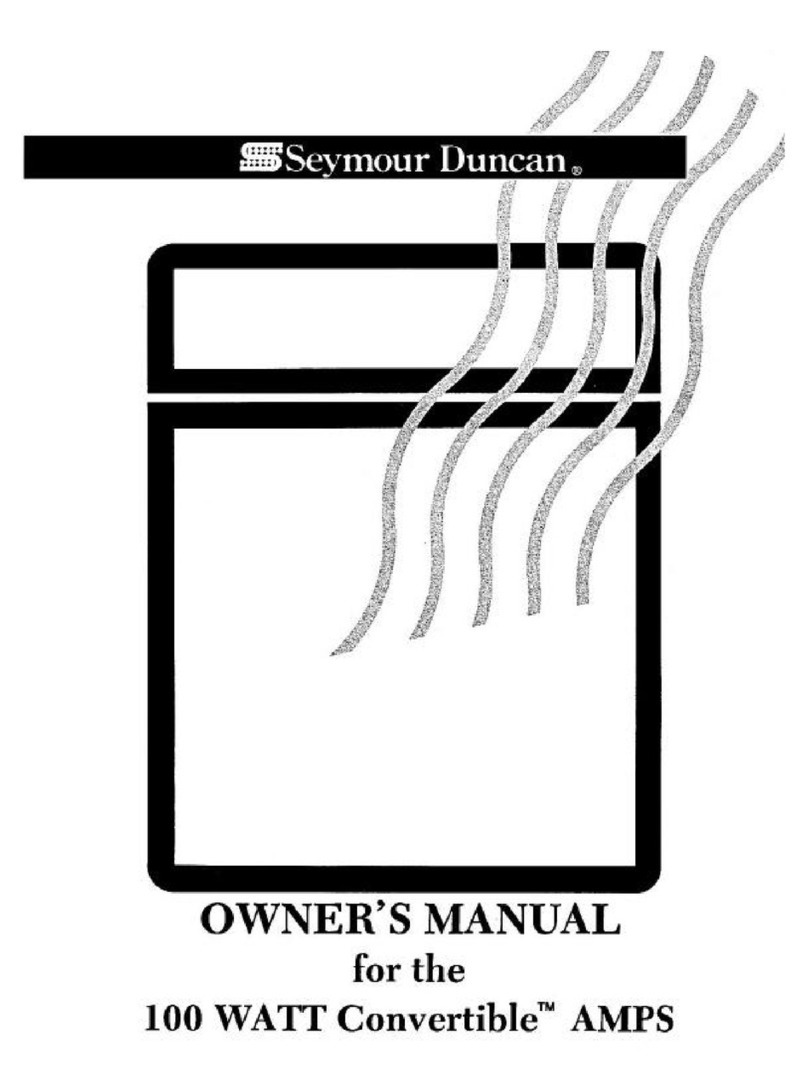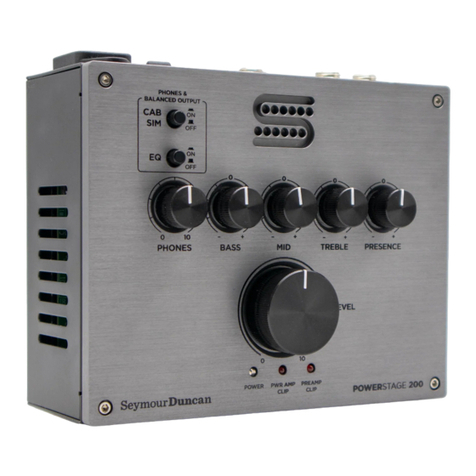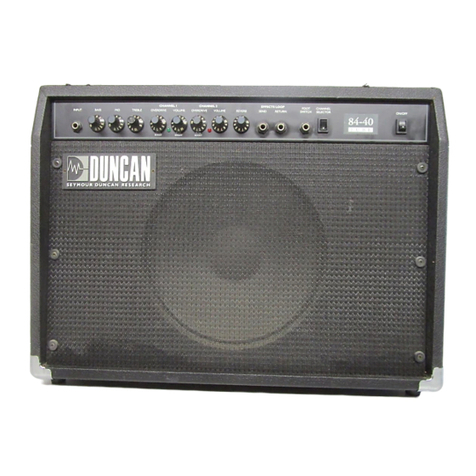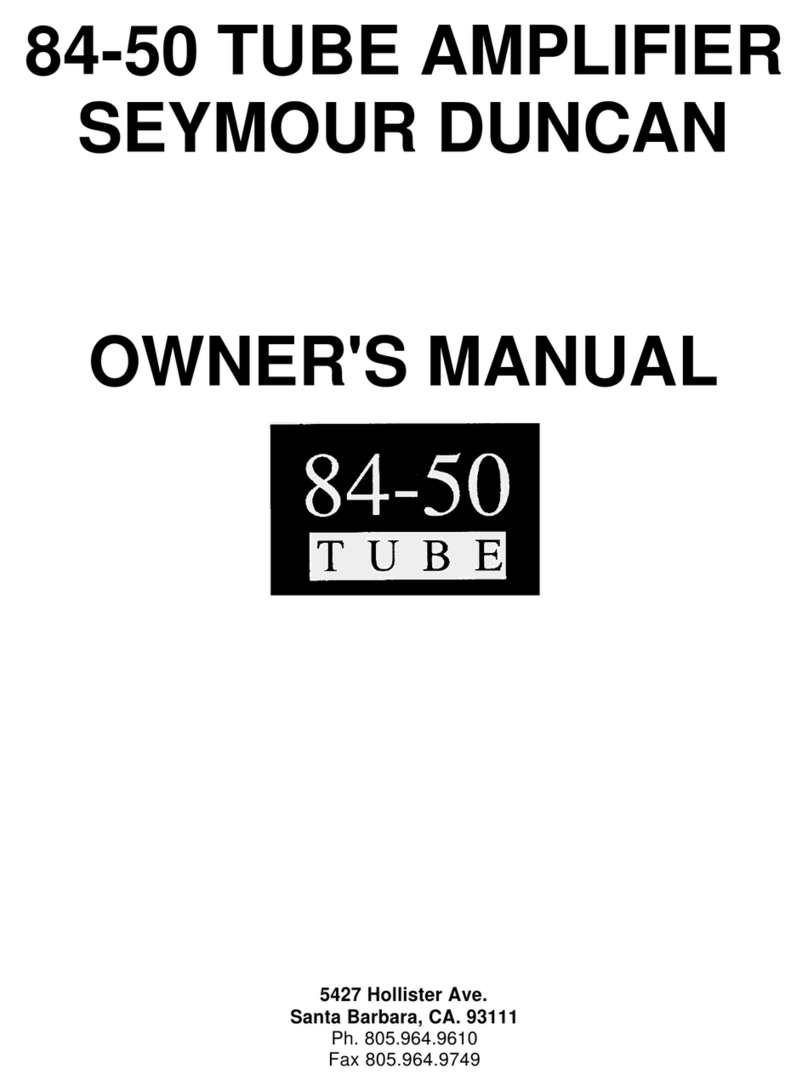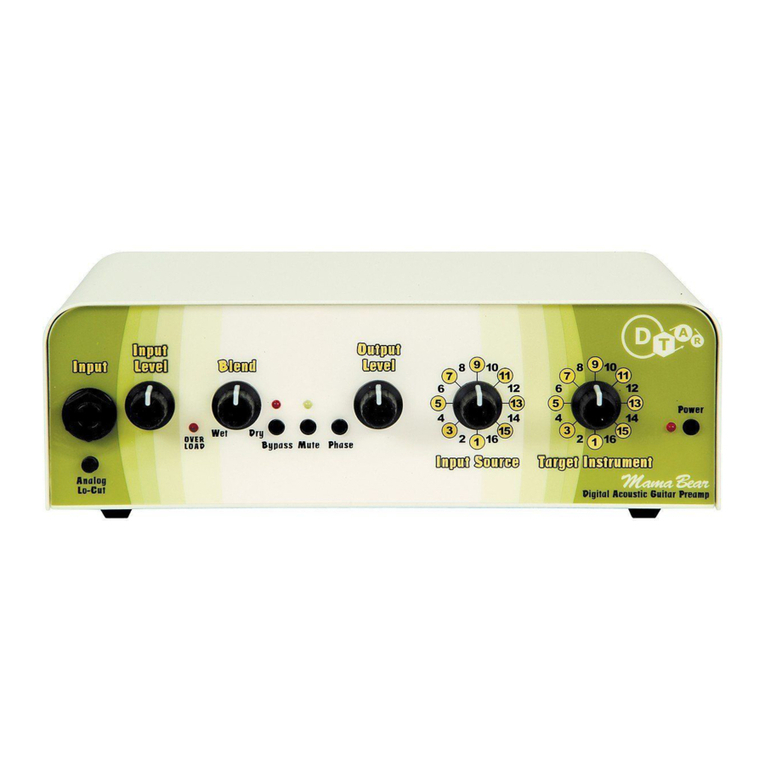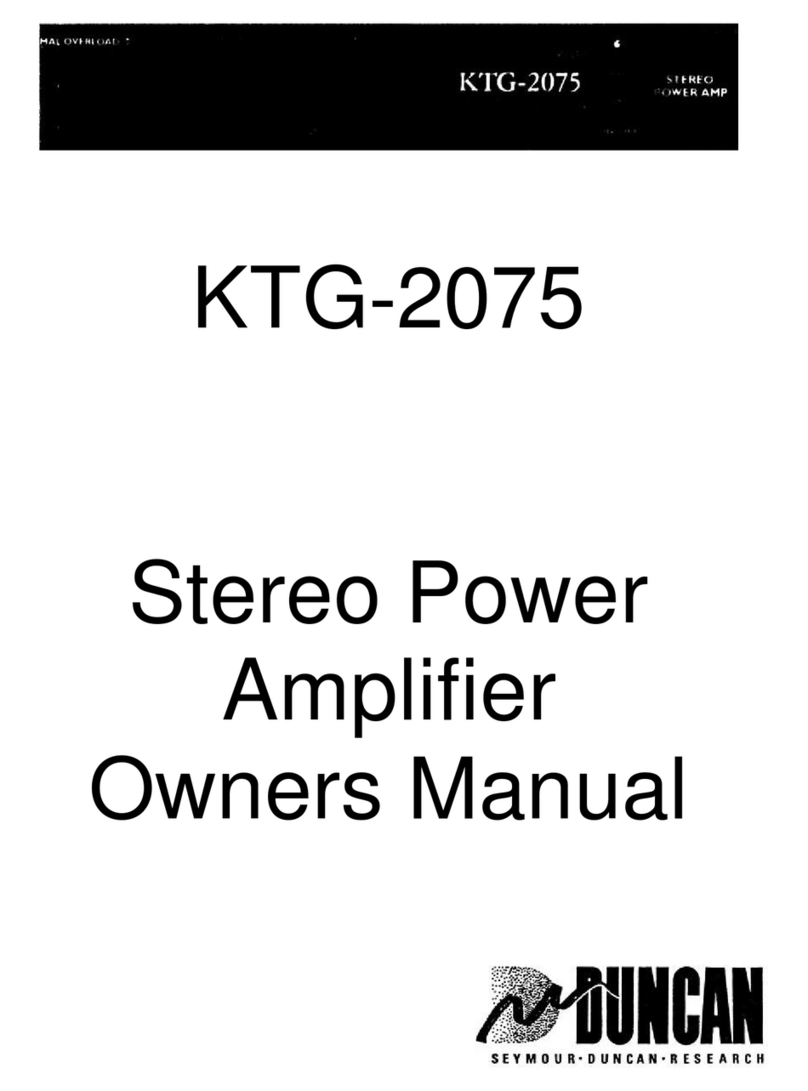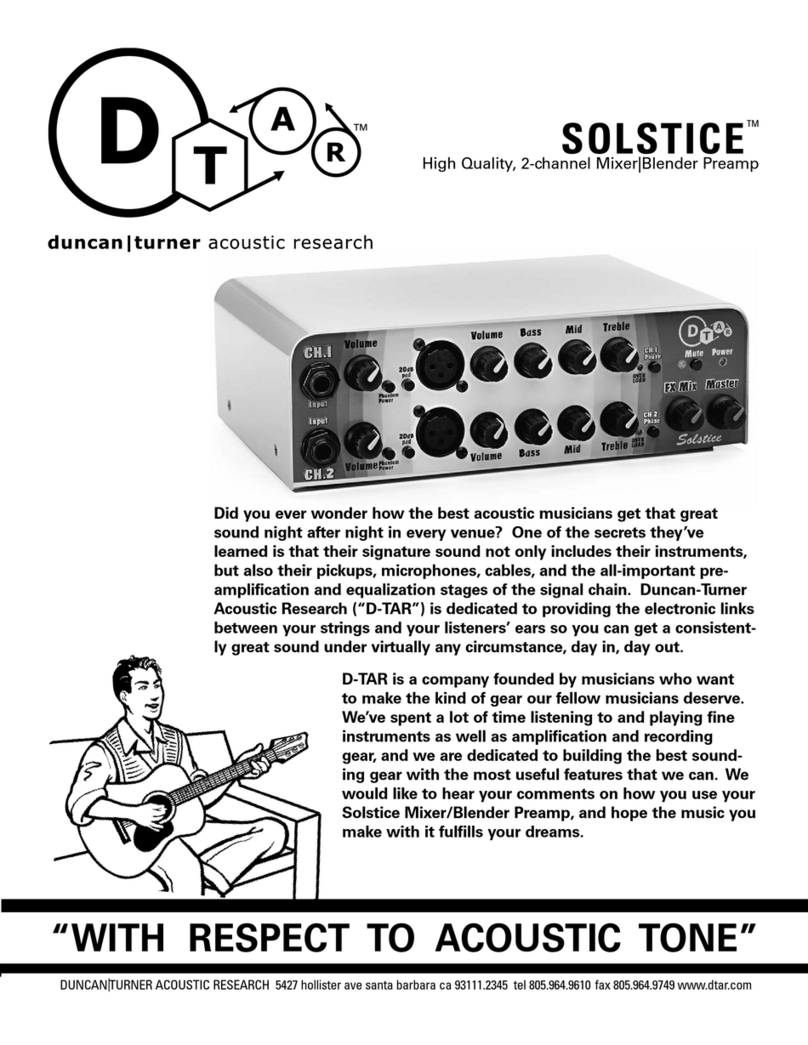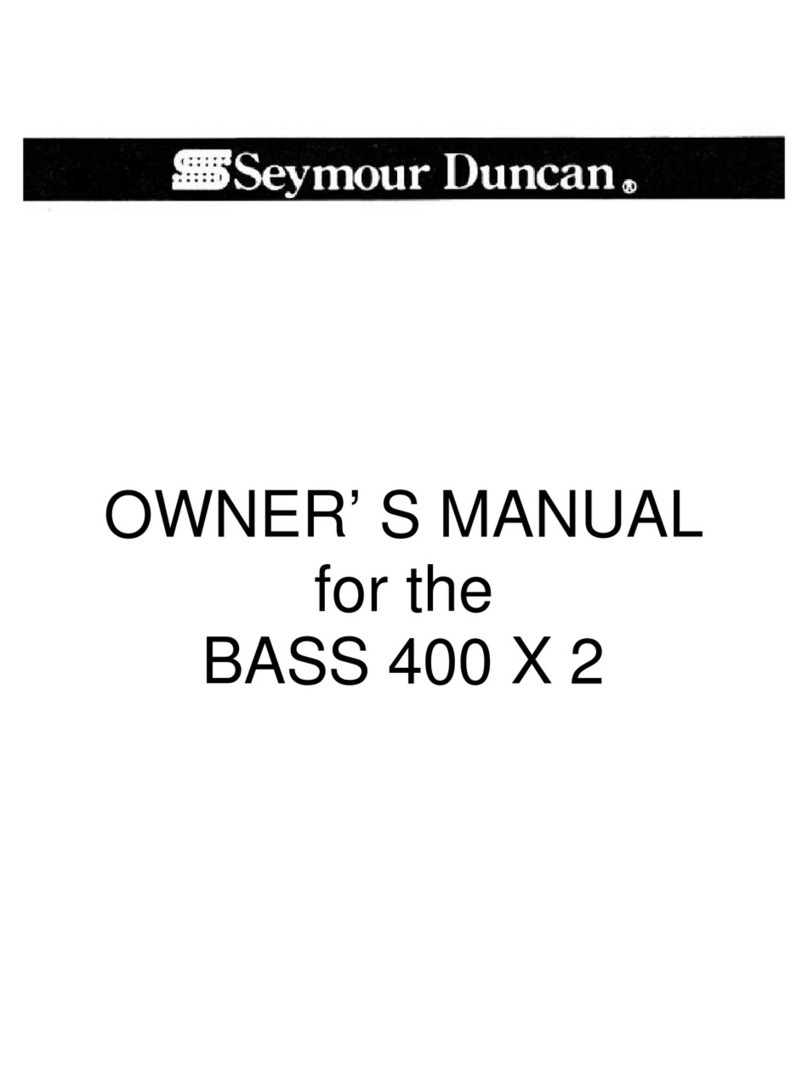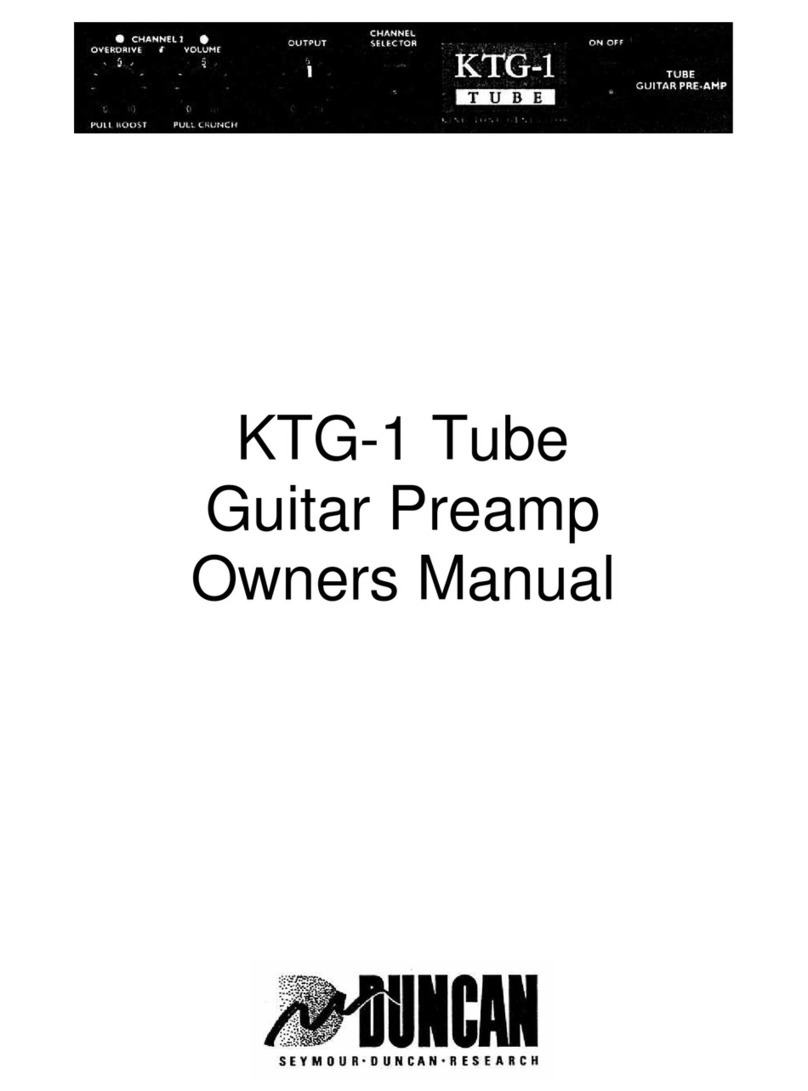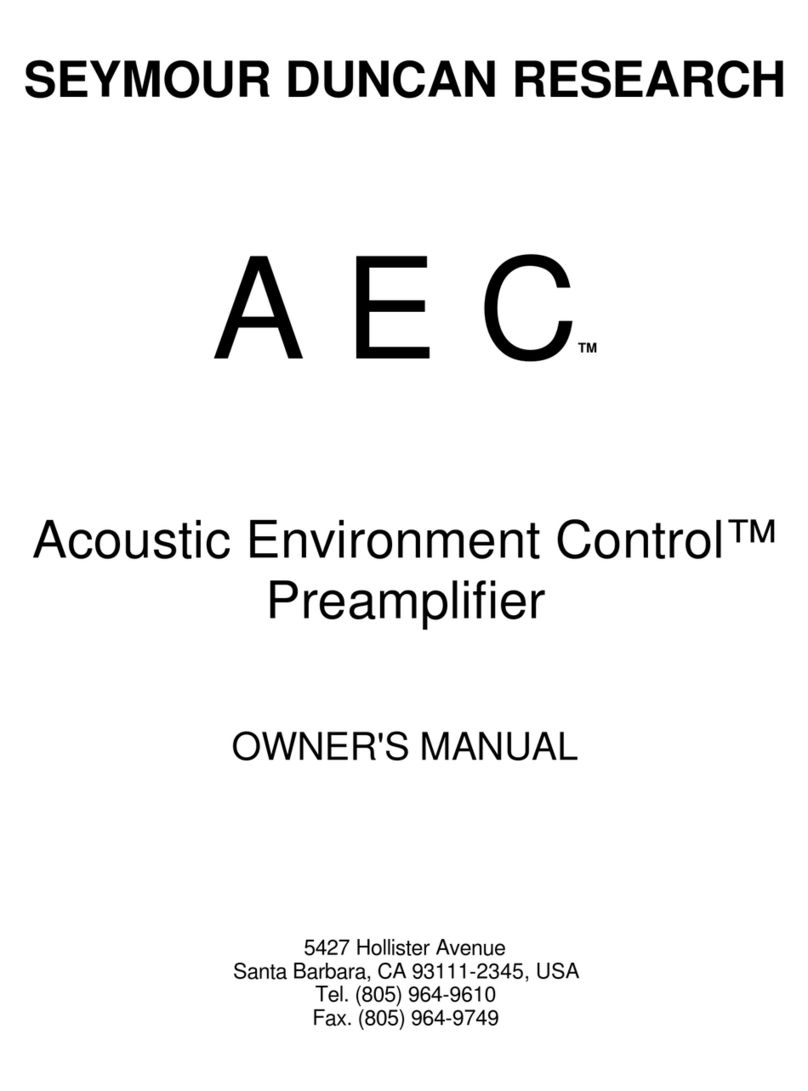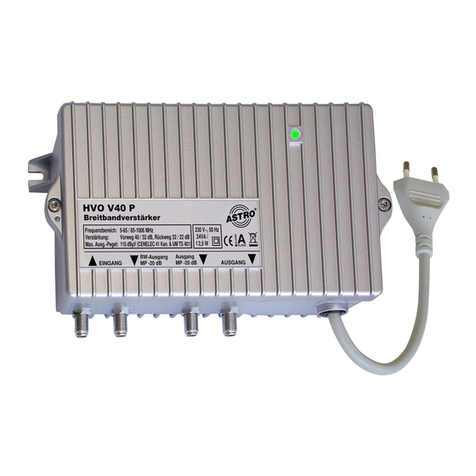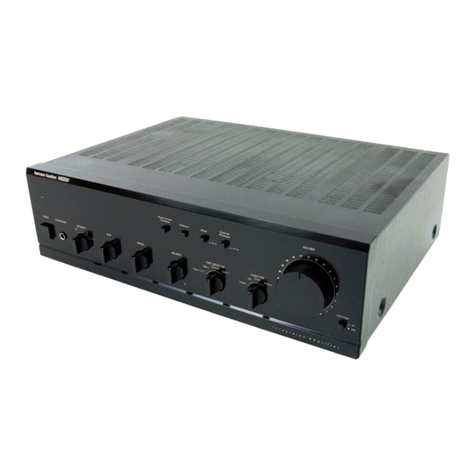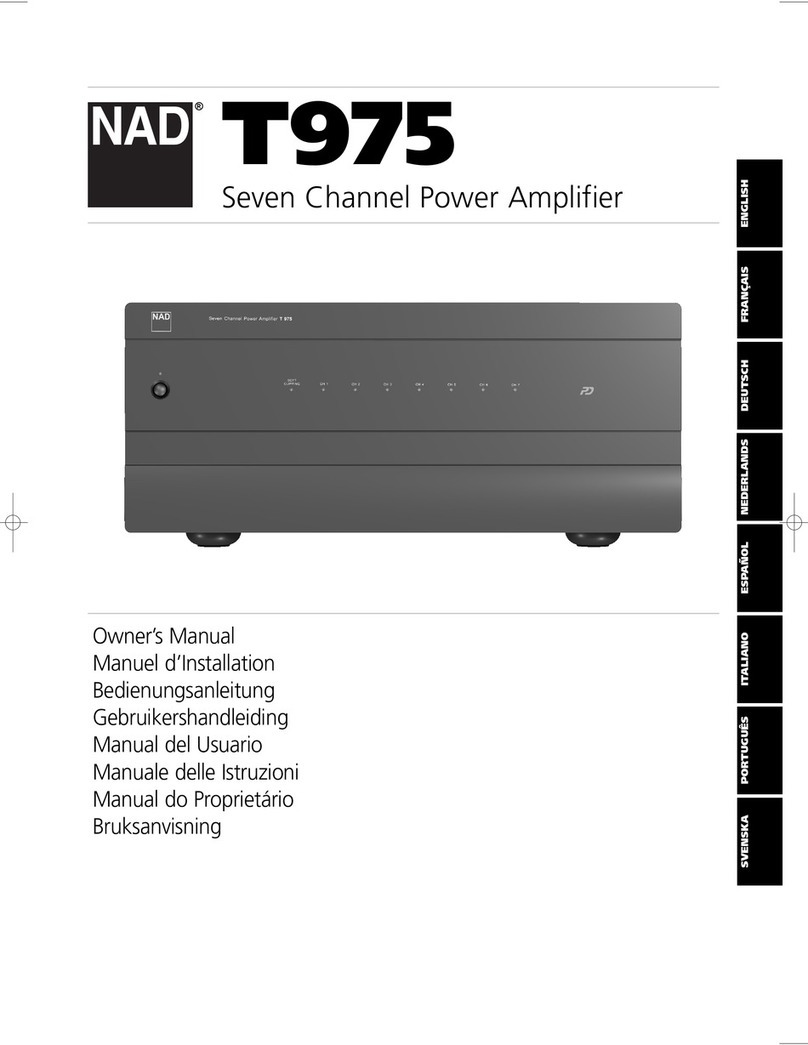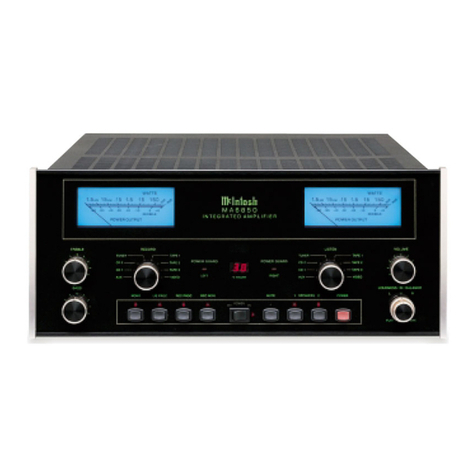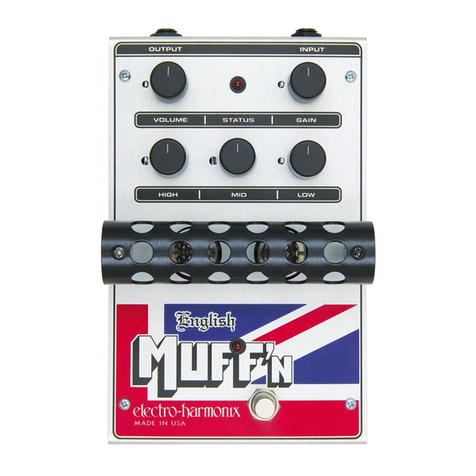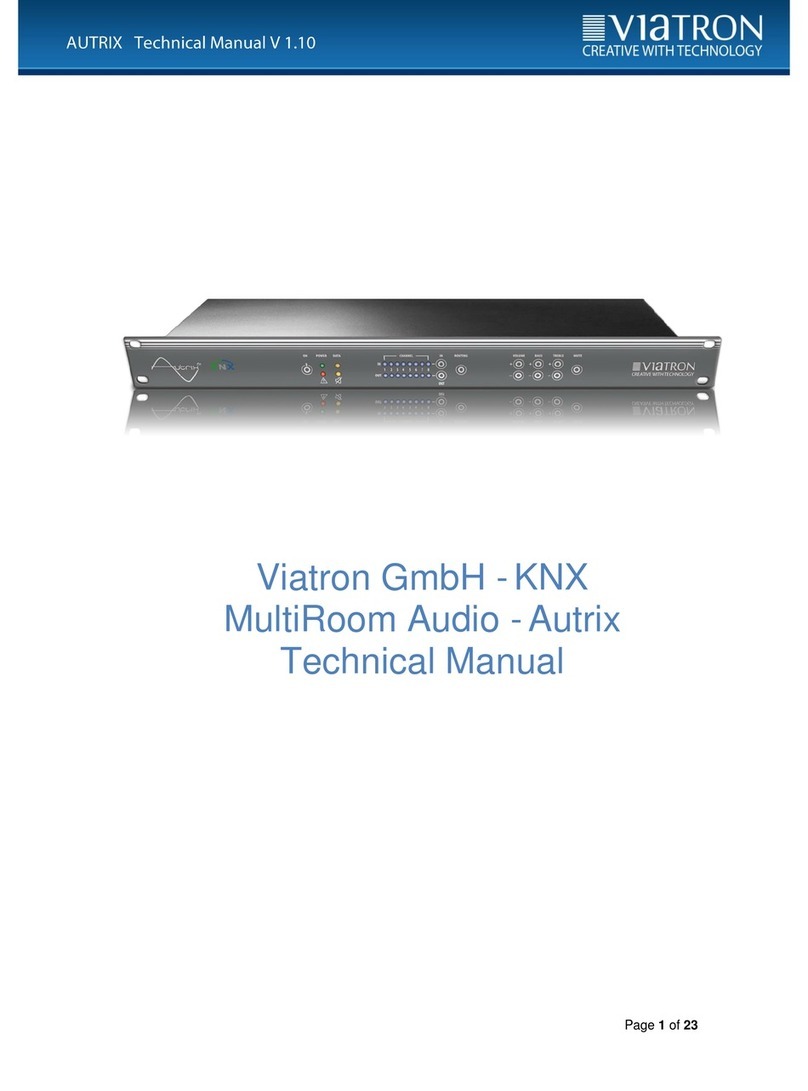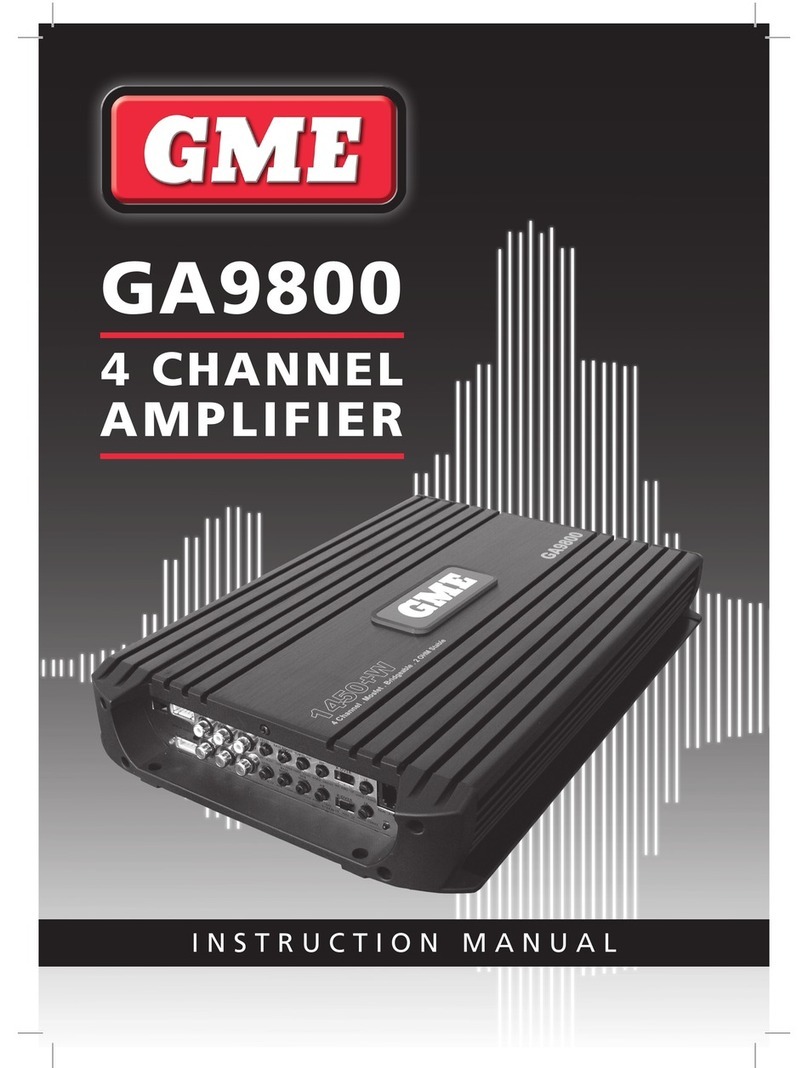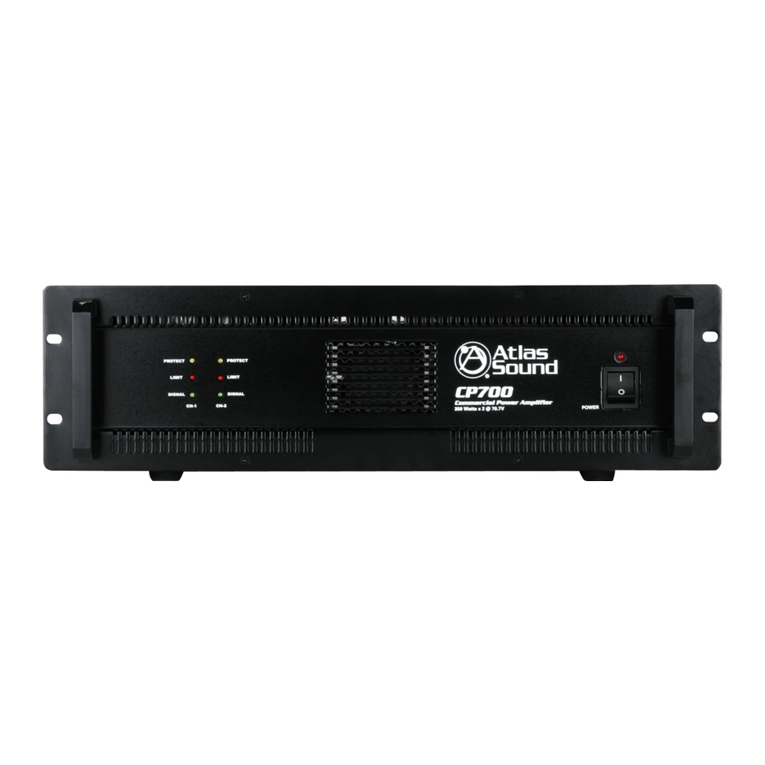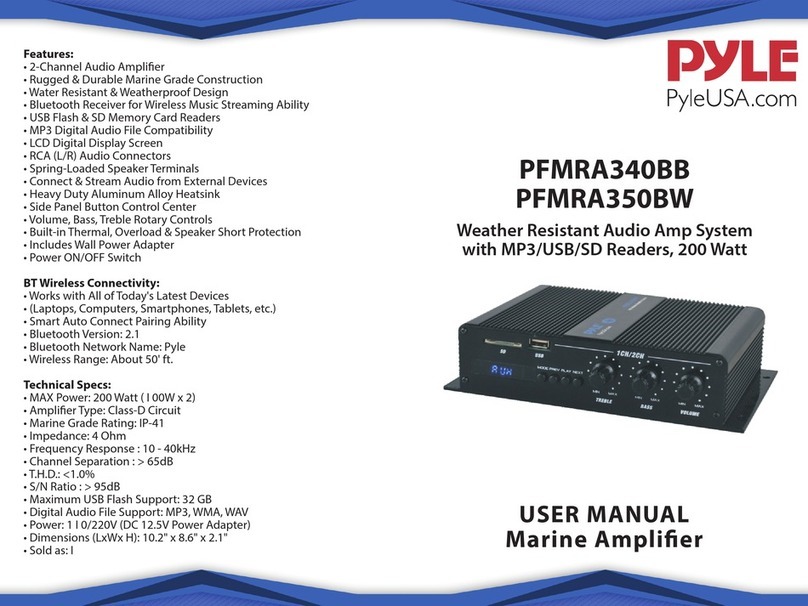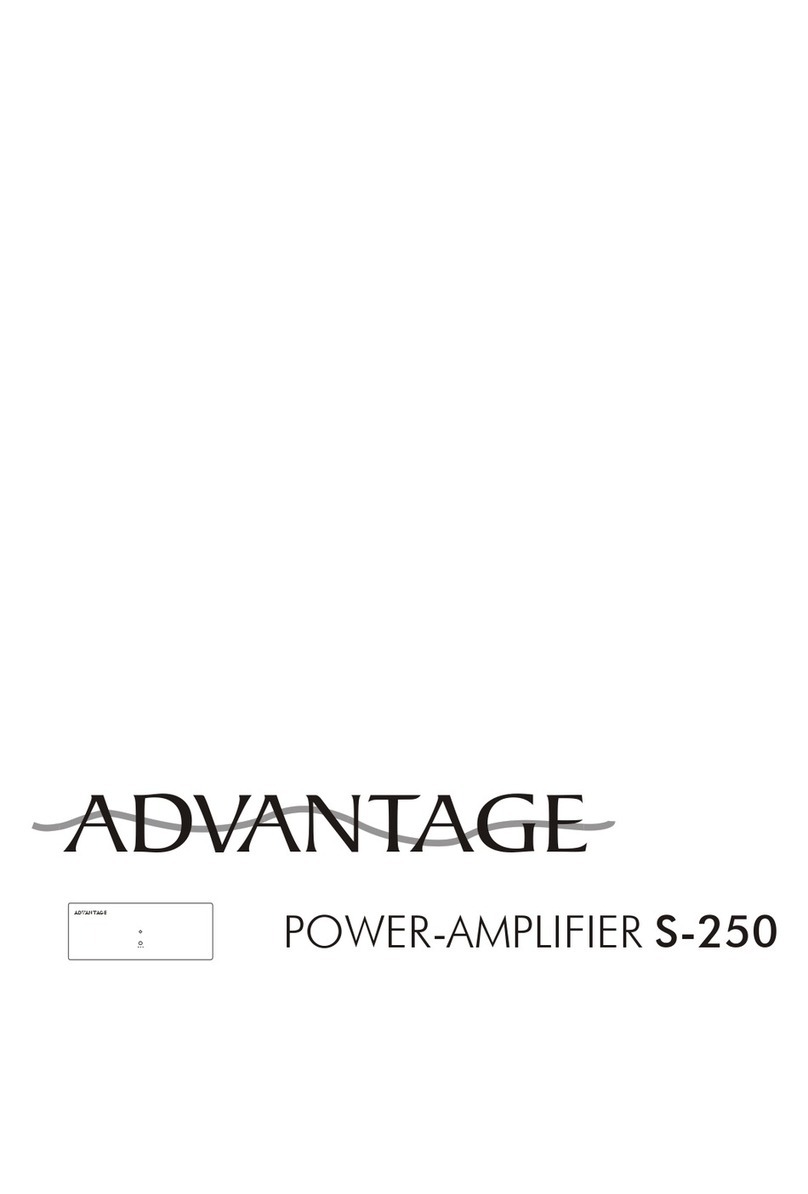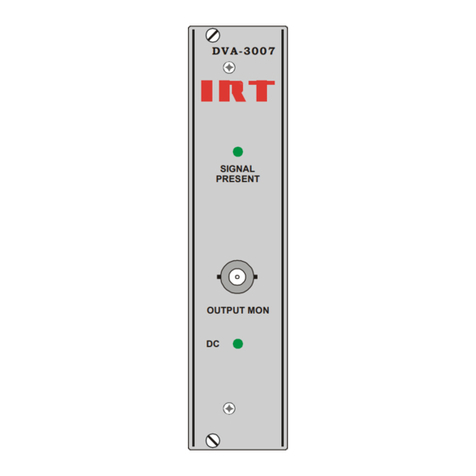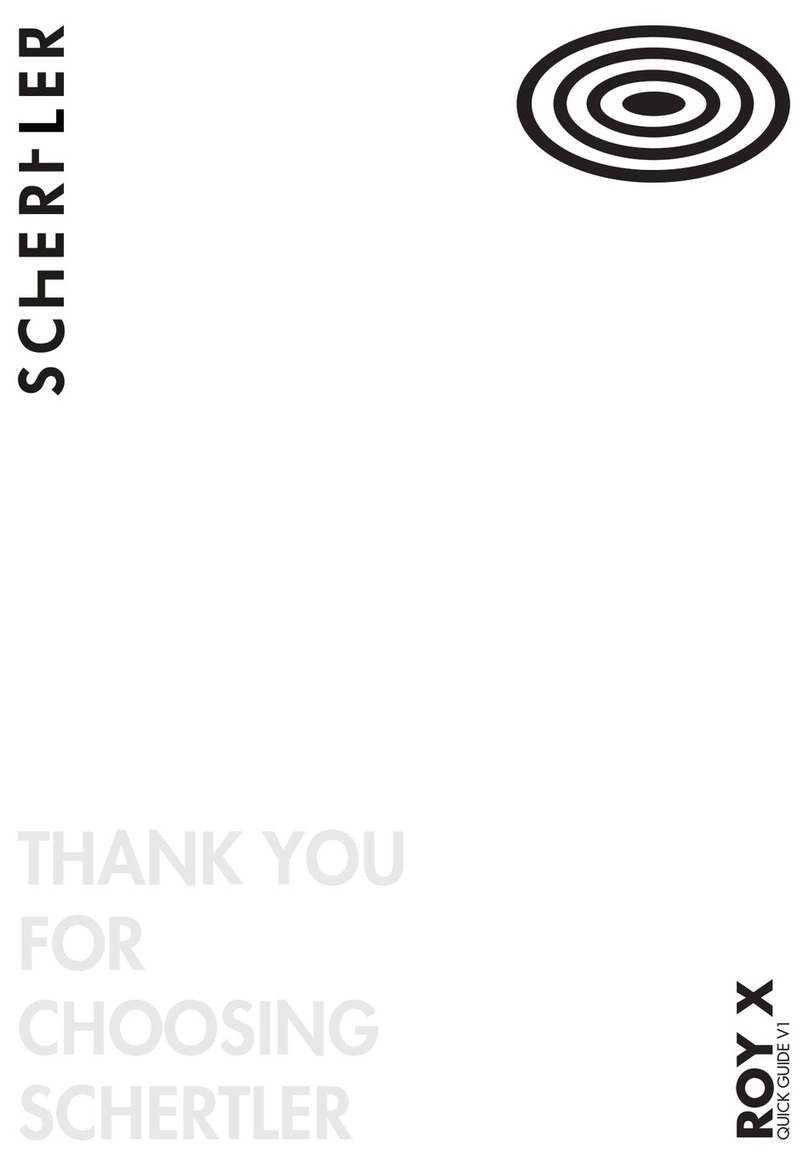
9) VOLUME, CHANNEL 2 (GREEN): This control operates exactly the same
way as the channel 1 (Red) Volume.
TONE CONTROLS: All three tone controls on your amp are "Active". This means
that you can either increase the tone level or decrease it. Most amps incorporate
"Passive" controls that allow you only decrease the tone levels.
The best way to use active tone controls is to start with all indicators at 12 o’clock
boost or cut in the areas you want to change.
10) TREBLE: This control lets you change the high-end response of your amp.
Turning the dial clockwise increases the high-end response up to 15db. Turning
the dial counterclockwise cuts the high-end response up to 15db.
11) MID: This control lets you change the volume of midrange response of your
amp. Turning the dial clockwise increases the level of midrange response up to
15db. Like the other tone controls, 12 o'clock is "flat"-no increase or decrease in
the tone response level.
12) BASS: The control lets you change the level of low-end response of your
amp. Turning the dial clockwise boosts low-end response up to 15db. Turning
the dial counter-clockwise Cuts the level of low-end response.
13) REVERB: This control lets you set the amount of reverberation you want in
your sound. Turn the reverb control clockwise to increase the amount of reverb
and counterclockwise to decrease. All the way counterclockwise is off.
Effects Loop: Use this circuit with your effects for the least amount of hiss. In
older design amps, players had to plug their guitars into effects and plug the
effects into the guitar input jack on their amps. With the Convertible 60 Watt
Amp, you can plug your guitar into the guitar input jack andrun your effects
through the Effects Loop for the least noise and least unwanted distortion. Level
output is compatible with rack mount effects, not floor batterytype effects.
14) SEND: The Send on your amp should be connected to the input of your
effect using a normal guitar cable. You can also use this jack to slave into other
amps without affecting the signal in your 60 Watt Convertible Amp.
15) RETURN: The return on your amp should be connected to the output of your
effect using a normal guitar cable. You want the signal to come OUT of your amp
INTO the effect. And OUT of the effect INTO your amp.
16) POWER: This switch is what gets your amp going, and turns it off.
